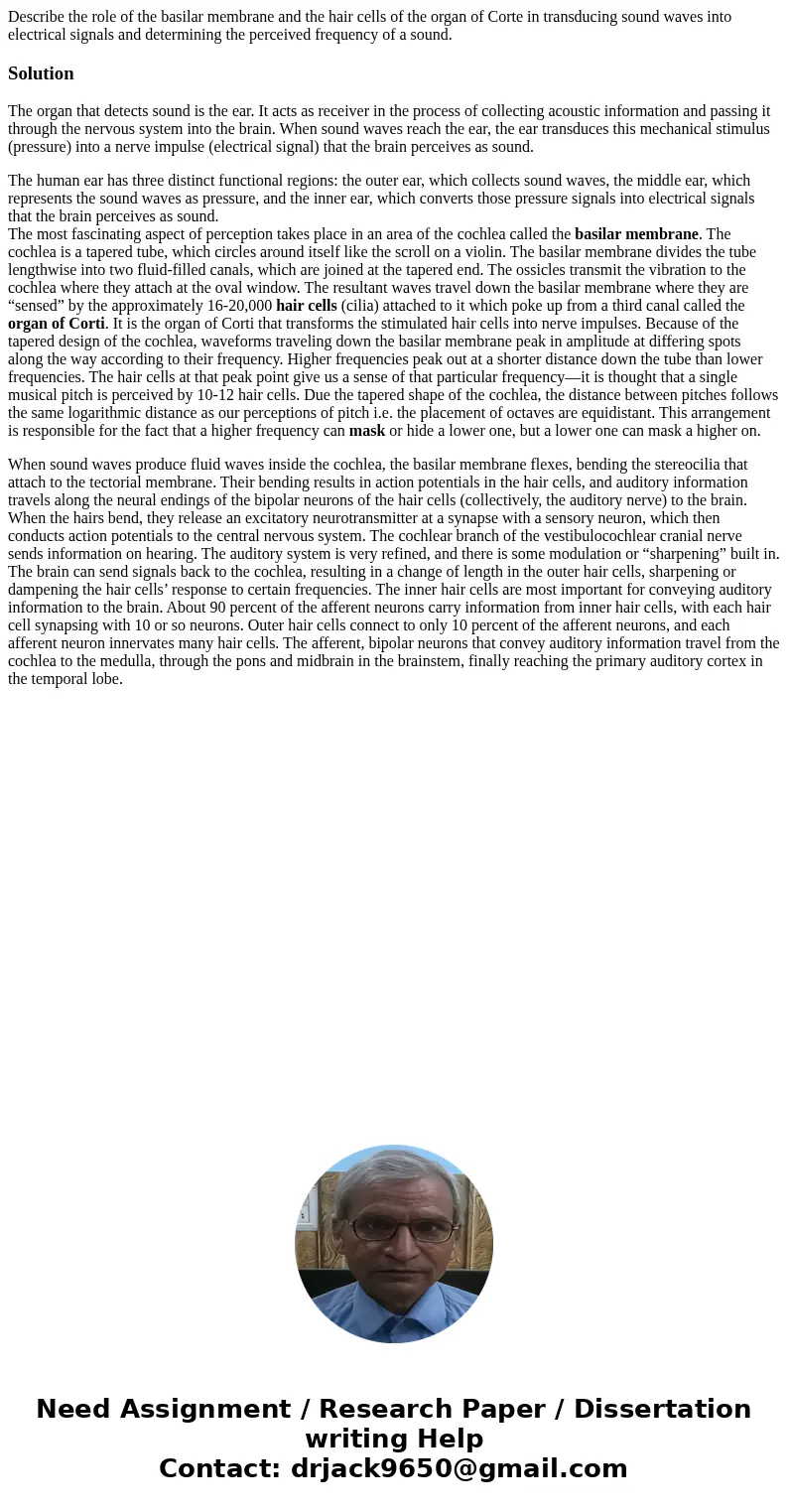Describe the role of the basilar membrane and the hair cells
Solution
The organ that detects sound is the ear. It acts as receiver in the process of collecting acoustic information and passing it through the nervous system into the brain. When sound waves reach the ear, the ear transduces this mechanical stimulus (pressure) into a nerve impulse (electrical signal) that the brain perceives as sound.
The human ear has three distinct functional regions: the outer ear, which collects sound waves, the middle ear, which represents the sound waves as pressure, and the inner ear, which converts those pressure signals into electrical signals that the brain perceives as sound.
The most fascinating aspect of perception takes place in an area of the cochlea called the basilar membrane. The cochlea is a tapered tube, which circles around itself like the scroll on a violin. The basilar membrane divides the tube lengthwise into two fluid-filled canals, which are joined at the tapered end. The ossicles transmit the vibration to the cochlea where they attach at the oval window. The resultant waves travel down the basilar membrane where they are “sensed” by the approximately 16-20,000 hair cells (cilia) attached to it which poke up from a third canal called the organ of Corti. It is the organ of Corti that transforms the stimulated hair cells into nerve impulses. Because of the tapered design of the cochlea, waveforms traveling down the basilar membrane peak in amplitude at differing spots along the way according to their frequency. Higher frequencies peak out at a shorter distance down the tube than lower frequencies. The hair cells at that peak point give us a sense of that particular frequency—it is thought that a single musical pitch is perceived by 10-12 hair cells. Due the tapered shape of the cochlea, the distance between pitches follows the same logarithmic distance as our perceptions of pitch i.e. the placement of octaves are equidistant. This arrangement is responsible for the fact that a higher frequency can mask or hide a lower one, but a lower one can mask a higher on.
When sound waves produce fluid waves inside the cochlea, the basilar membrane flexes, bending the stereocilia that attach to the tectorial membrane. Their bending results in action potentials in the hair cells, and auditory information travels along the neural endings of the bipolar neurons of the hair cells (collectively, the auditory nerve) to the brain. When the hairs bend, they release an excitatory neurotransmitter at a synapse with a sensory neuron, which then conducts action potentials to the central nervous system. The cochlear branch of the vestibulocochlear cranial nerve sends information on hearing. The auditory system is very refined, and there is some modulation or “sharpening” built in. The brain can send signals back to the cochlea, resulting in a change of length in the outer hair cells, sharpening or dampening the hair cells’ response to certain frequencies. The inner hair cells are most important for conveying auditory information to the brain. About 90 percent of the afferent neurons carry information from inner hair cells, with each hair cell synapsing with 10 or so neurons. Outer hair cells connect to only 10 percent of the afferent neurons, and each afferent neuron innervates many hair cells. The afferent, bipolar neurons that convey auditory information travel from the cochlea to the medulla, through the pons and midbrain in the brainstem, finally reaching the primary auditory cortex in the temporal lobe.

 Homework Sourse
Homework Sourse